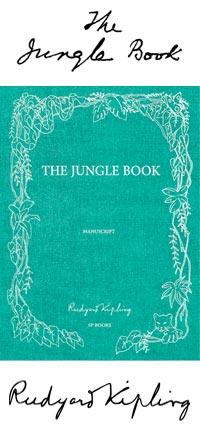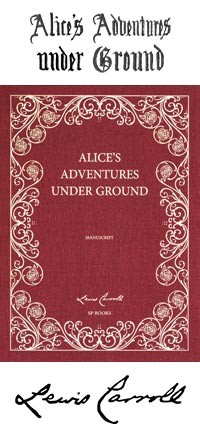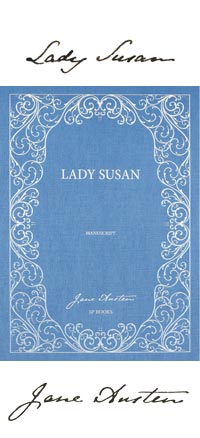Frankenstein by Mary Shelley
Frankenstein, a legendary manuscript, by Mary Shelley
Frankenstein’s monster has become so famous that its form and features have engulfed those of its creators - firstly the protagonist, the Swiss scholar Victor Frankenstein, and secondly the author of the novel herself, Mary Shelley. He dominates to such an extent that the name Frankenstein is often mistakenly attributed to the monster resurrected from the dead, a formidable reputation which has lasted for over two centuries.
No one could have imagined that these three hundred pages, written in two large notebooks and kept at the prestigious Bodleian Library in Oxford since 2004, would have had such a significant influence on the worlds of literature, cinema, theatre and the arts. For a novel which was published anonymously in only 500 copies on 1 January 1818, the book has been adapted and retold too many times to count.
The text was first attributed to the poet Percy Bysshe Shelley - likely because he wrote the preface to the first edition.
A game to pass a stormy evening…
It was the summer of 1816. Aged 18, Mary Wollstonecraft Godwin was holidaying on the shores of Lake Geneva in Switzerland, accompanied by her future husband, Percy Shelley, her step-sister Claire Clairmont and some friends, the poet Lord Byron and Italian doctor John Polidori. They were staying at the splendid Villa Diodati, rented by Byron in Cologny near Geneva. The setting should have been perfect for a group of young people who delighted in each other's company. However, the cold and dreary weather betrayed them, and they were forced to remain locked up for days in the villa.
They amused themselves by discussing the ideas of Erasmus Darwin - grandfather of Charles Darwin - and by reading ghost stories from the book Fantasmagoriana, ou Recueil d'histoires d'apparitions de spectres, revenans, fantômes, etc. (Anthology of stories of apparitions of spectres, revenants, phantoms, etc.)
In need of entertainment during one stormy evening, Lord Byron proposed they should “each write a ghost story”, and determine who could come up with the best one.

The group were galvanised by the contest: Byron himself wrote a fragment of what would become the basis for John Polidori’s novel The Vampyre - published three years later in The New Monthly Magazine. We can assume that Percy also joined in, having at this point gained recognition in the literary world as a poet and recently released one of his major poems, ‘Alastor, or The Spirit of Solitude’. His fiancée, Mary, also set her mind to writing a blood-chilling tale. She set to work, without the knowledge that her novel would gain a cult following, inspiring generations of readers, writers and directors.
...became a legendary novel
It is hard to imagine what would have been running through her mind, having just run away from home at an early age in the company of her lover, a man preceded by a scandalous reputation.
Did she want to impress him? Did she take part in the contest for fun or to satisfy an appetite for literature, or was it both? Mary had enjoyed a fairly extensive intellectual upbringing at the hands of her father.
Frankenstein would draw on her knowledge of several genres: gothic, fantasy and horror. Her story encapsulates diverse themes, including the myth of Prometheus and scientific progress. It’s possible that she also drew from her personal experience: some scholars believe that the core concept of Frankenstein, namely the ability to bring dead matter back to life, came to Mary through a personal tragedy, the loss of her child at seven months old which had occurred only several months before writing.
The novelist deployed all of her elegance and skill to produce a character that creates equal parts repulsion and fascination. Percy, looking over her shoulder, read her words carefully. He even went so far as to annotate the manuscript, creating a text that shows a literary and intimate dialogue between lovers that emerges through the pages. Their handwriting is so similar that it is not always possible to discern between what Percy may have jotted in the margins and what Mary may have edited herself. We can observe, however, the revisions to the rhythm and meter, Mary seemingly taking particular care to avoid repetitions to her text. It could be partly thanks to Percy that Mary’s style became clearer, gradually allowing Victor Frankenstein’s monstrous creation to take on a more human face and body.

Mary Shelley, an independent woman
Published in 1818, Frankenstein; or, The Modern Prometheus was an instant success. Nevertheless, Mary Shelley reworked it for the version that appeared in 1831. Despite the further novels, poems and travel writing she published during her lifetime, Frankenstein remains indisputably Mary Shelley’s major work.
Daughter of feminist philosopher Mary Wollstonecraft and political writer William Godwin, the novel reflects Mary Shelley’s characteristic independence, evident in her decision to devote herself to her writing and to her husband, who died early in a freak accident. It also reflects the many personal tragedies experienced by Shelley, whose existence was marked from childhood by a series of bereavements of those close to her.

A preface by Maxime Chattam
Maxime Chattam has indisputably become one of the masters of the thriller novel in recent years. Raised on American and Anglo-Saxon culture and inspired by fantasy and suspense literature, he studied criminology and began his literary career in France with the novel L’Âme du mal (The Soul of Evil) (Éditions Michel Lafon, 2002). He is also author of a successful series for teenagers, Autre-Monde (Another World) (Albin Michel, 2008-2018).
Maxime Chattam is a member of the artist collective La Ligue de l'Imaginaire (League of the Imagination). Mary Shelley’s Frankenstein and Guy de Maupassant’s Le Horla are among the texts that have helped shape the imaginary world of his writing.


Deluxe edition
Numbered from 1 to 1,000, this Oxford blue edition is presented in a large format handmade slipcase.
Printed with vegetal ink on eco-friendly paper, each book is bound and sewn using only the finest materials.
Mrs Dalloway: Thanks to a new reproduction of the only full draft of Mrs. Dalloway, handwritten in three notebooks and initially titled “The Hours,” we now know that the story she completed — about a day in the life of a London housewife planning a dinner party — was a far cry from the one she’d set out to write (...)
The Grapes of Wrath: The handwritten manuscript of John Steinbeck’s masterpiece The Grapes of Wrath, complete with the swearwords excised from the published novel and revealing the urgency with which the author wrote, is to be published for the first time. There are scarcely any crossings-out or rewrites in the manuscript, although the original shows how publisher Viking Press edited out Steinbeck’s dozen uses of the word “fuck”, in an attempt to make the novel less controversial. (...)
Jane Eyre: This is a book for passionate people who are willing to discover Jane Eyre and Charlotte Brontë's work in a new way. Brontë's prose is clear, with only occasional modifications. She sometimes strikes out words, proposes others, circles a sentence she doesn't like and replaces it with another carefully crafted option. (...)
The Jungle Book: Some 173 sheets bearing Kipling’s elegant handwriting, and about a dozen drawings in black ink, offer insights into his creative process. The drawings were not published because they are unfinished, essentially works in progress. (...)
The Lost World: SP Books has published a new edition of The Lost World, Conan Doyle’s 1912 landmark adventure story. It reproduces Conan Doyle’s original manuscript for the first time, and includes a foreword by Jon Lellenberg: "It was very exciting to see, page by page, the creation of Conan Doyle’s story. To see the mind of the man as he wrote it". Among Conan Doyle’s archive, Lellenberg made an extraordinary discovery – a stash of photographs of the writer and his friends dressed as characters from the novel, with Conan Doyle taking the part of its combustible hero, Professor Challenger. (...)
Frankenstein: There is understandably a burst of activity surrounding the book’s 200th anniversary. The original, 1818 edition has been reissued, as paperback by Penguin Classics. There’s a beautifully illustrated hardcover, “The New Annotated Frankenstein” (Liveright) and a spectacular limited edition luxury facsimile by SP Books of the original manuscript in Shelley's own handwriting based on her notebooks. (...)
The Great Gatsby: But what if you require a big sumptuous volume to place under the tree? You won’t find anything more breathtaking than SP Books ’s facsimile of F. Scott Fitzgerald’s handwritten manuscript of The Great Gatsby, showing the deletions, emendations and reworked passages that eventually produced an American masterpiece (...)
Oliver Twist: In the first ever facsimile edition of the manuscript SP Books celebrates this iconic tale, revealing largely unseen edits that shed new light on the narrative of the story and on Dickens’s personality. Heavy lines blocking out text are intermixed with painterly arabesque annotations, while some characters' names are changed, including Oliver’s aunt Rose who was originally called Emily. The manuscript also provides insight into how Dickens censored his text, evident in the repeated attempts to curb his tendency towards over-emphasis and the use of violent language, particularly in moderating Bill Sikes’s brutality to Nancy. (...)
Peter Pan: It is the manuscript of the latter, one of the jewels of the Berg Collection in the New York Public Library, which is reproduced here for the first time. Peter’s adventures in Neverland, described in Barrie’s small neat handwriting, are brought to life by the evocative color plates with which the artist Gwynedd Hudson decorated one of the last editions to be published in Barrie’s lifetime. (...)




















Customer reviews
I just received my copy of 'Frankenstein' and I am so love with the edition. The book is gorgeous, well-made, and it lights up my Shelleyan heart. I cannot recommend this book, or SP books enough. They have been very pleasant to order from, they've been prompt in customer service, and their product is beyond compare. I'm very pleased!!!
Very beautiful.